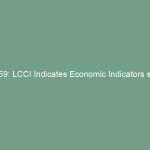5 Tips For Creating An Effective Customer Feedback Loop
In today’s highly competitive business landscape, creating an effective customer feedback loop is crucial for organizations seeking to understand and improve their products and services. By actively seeking feedback from customers, businesses can gain valuable insights into customer preferences, identify areas for improvement, and enhance overall customer satisfaction. In this article, we will explore five essential tips for creating an effective customer feedback loop.
Introduction
Effective communication with customers is vital for any business, and a customer feedback loop provides a structured approach to gather, analyze, and act upon customer feedback. By implementing a robust feedback loop, organizations can better understand their customers’ needs, enhance their products or services, and build long-term relationships.
Why is a Customer Feedback Loop Important?
A customer feedback loop is essential for several reasons. Firstly, it allows businesses to gain insights into customer preferences and expectations. By understanding what customers want, businesses can tailor their offerings to meet those needs effectively.
Secondly, a feedback loop helps identify areas where improvement is needed. Customers often provide valuable suggestions and highlight pain points that may not be apparent to the business. By actively seeking feedback, organizations can address these issues and enhance the overall customer experience.
Lastly, a well-executed feedback loop demonstrates to customers that their opinions are valued. When customers feel heard and see that their feedback leads to meaningful changes, they develop a sense of loyalty and are more likely to become repeat customers.
Tip 1: Define Clear Objectives
Before implementing a customer feedback loop, it is essential to define clear objectives. What specific goals do you hope to achieve through the feedback loop? Whether it’s improving customer satisfaction, enhancing product features, or identifying areas for process optimization, having well-defined objectives will guide the entire feedback collection and analysis process.
Tip 2: Choose the Right Feedback Channels
Selecting the right feedback channels is crucial to ensure maximum participation and engagement from customers. Consider various channels such as online surveys, feedback forms, email, social media, or even direct customer interviews. Different customers may have different preferences, so offering multiple channels provides flexibility and convenience. Additionally, leveraging technology and using automated feedback systems can streamline the process and collect feedback efficiently.
Tip 3: Encourage Honest and Constructive Feedback
To gather valuable insights, it is important to encourage customers to provide honest and constructive feedback. Create a safe and non-judgmental environment where customers feel comfortable sharing their opinions. Assure them that their feedback will be taken seriously and used to drive positive changes. Offering incentives, such as discounts or exclusive access to new features, can also motivate customers to participate in the feedback process.
Tip 4: Actively Listen and Respond to Feedback
Listening attentively to customer feedback is the cornerstone of an effective feedback loop. Actively monitor feedback channels and ensure prompt responses to customer inquiries or concerns. Acknowledge and appreciate the feedback received, even if it is critical. Responding in a timely and empathetic manner demonstrates that the business values its customers and their opinions.
Tip 5: Implement Changes Based on Feedback
The true value of a customer feedback loop lies in takingaction based on the feedback received. Once feedback has been collected and analyzed, it is essential to implement changes and improvements accordingly. Share the outcomes of the feedback loop with relevant teams and departments within the organization to ensure a collaborative approach to implementing changes. Communicate with customers about the actions taken based on their feedback, demonstrating that their voices were heard and their input was instrumental in driving positive change.
Conclusion
Creating an effective customer feedback loop is a powerful strategy for businesses to understand their customers, improve their offerings, and foster strong customer relationships. By defining clear objectives, choosing the right feedback channels, encouraging honest feedback, actively listening and responding, and implementing changes based on feedback, organizations can create a feedback loop that drives continuous improvement and enhances overall customer satisfaction.
FAQs
1. How often should I collect customer feedback? It depends on your business and industry. Regularly collecting feedback, such as through post-purchase surveys or periodic check-ins, can provide valuable insights. However, be mindful of not overwhelming customers with excessive feedback requests.
2. Should I focus on quantitative or qualitative feedback? Both quantitative and qualitative feedback have their merits. Quantitative data provides statistical insights, while qualitative feedback offers detailed context. A combination of both can provide a comprehensive understanding of customer preferences and experiences.
3. How can I ensure customer feedback remains confidential? Respecting customer privacy is crucial. Implement data protection measures, use secure feedback collection methods, and assure customers that their feedback will be kept confidential and used only for the intended purpose.
4. Can negative feedback be beneficial? Absolutely. Negative feedback provides opportunities for improvement. Embrace constructive criticism, view it as a chance to address shortcomings, and turn dissatisfied customers into loyal advocates through effective resolution.
5. How can I encourage customers to provide feedback? Make it easy for customers to provide feedback by using user-friendly channels. Offer incentives or rewards for participation. Clearly communicate how their feedback will be used to drive positive change and enhance their overall experience.










